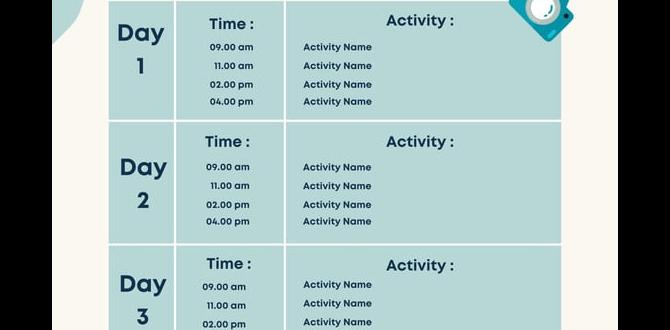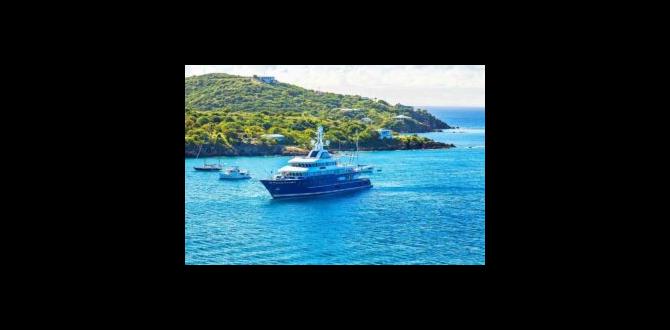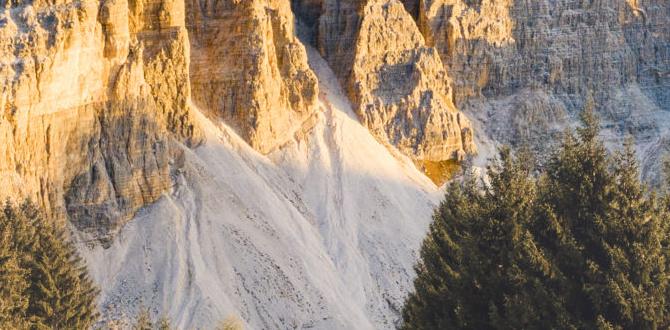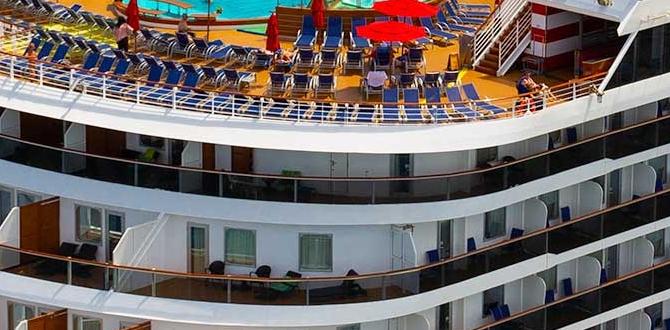Your premier Brazil road trip base guide covers essential tips for planning a smooth adventure. From understanding diverse landscapes to packing smart and navigating safely, we’ll equip you with everything needed for an unforgettable journey across Brazil.
Planning a road trip through Brazil might sound like a grand adventure, and it is! But it can also feel a little overwhelming when you start thinking about all the moving parts. Where do you even begin to map out a journey across such a vast and diverse country?
Many travelers find themselves unsure about the best routes, essential preparations, or how to truly experience all Brazil has to offer from the driver’s seat. Don’t worry, we’ve got you covered! We’ll walk you through the absolute must-knows to make your Brazil road trip exciting, comfortable, and stress-free. Get ready to discover the magic of Brazil, one mile at a time.
Choosing Your Brazil Road Trip Base Route
Brazil is enormous, offering an incredible array of landscapes and experiences. Deciding on a starting point and a general route is the first crucial step. Your chosen “base” will influence everything from the climate you’ll encounter to the types of attractions you’ll see.
Popular Road Trip Styles
Think about what kind of trip you envision:
- Coastal Cruise: Focus on Brazil’s stunning coastline, from the beaches of the Northeast to the dramatic cliffs of the South. This often involves major highways that hug the shore.
- Nature Explorer: Head inland to experience the Amazon Rainforest, the Pantanal wetlands, or the Iguazu Falls. These routes might involve more rural roads and require careful planning for off-road conditions.
- Cultural Discovery: Explore historic colonial towns, vibrant cities, and diverse regional cultures. This could involve a mix of highways and smaller connecting roads.
- Southern Charm: Concentrate on the southern states known for European influences, vineyards, and a more temperate climate.
Understanding Brazil’s Vastness
It’s impossible to see everything in one trip. Here’s why:
- Size: Brazil is the fifth-largest country in the world. Driving from Salvador to Manaus, for example, is a multi-day journey, not a quick hop.
- Incredible Diversity: Each region offers unique flora, fauna, culture, and climates. A road trip focused on the Amazon will be vastly different from one exploring the beaches of Rio de Janeiro.
- Logistical Challenges: Long distances mean you need to factor in significant driving time, rest stops, and potential vehicle maintenance.
For beginners, it’s often best to choose one or two regions to focus on rather than trying to cover the entire country.
Essential Pre-Trip Planning and Documentation
Before you even think about hitting the road, thorough preparation is key. This includes securing the right documents, understanding local regulations, and ensuring your vehicle is ready for the journey.
Required Documents for Drivers
International Driving Permit (IDP): While your home country’s driver’s license might be accepted in some cases, an International Driving Permit is highly recommended for smooth interactions with authorities and car rental agencies. You can typically obtain an IDP from your national automobile association before you travel. Make sure it’s valid for the duration of your trip.
Passport and Visa: Ensure your passport is valid for at least six months beyond your intended stay. Check the visa requirements for your nationality entering Brazil well in advance. You can usually find this information on the official Brazilian consulate website for your country.
Vehicle Registration and Insurance: If you’re driving your own vehicle, ensure all registration documents are up-to-date. If renting, confirm that the rental agreement includes comprehensive insurance that covers the areas you plan to visit. It’s wise to have a copy of all important documents easily accessible.
Pre-Trip Vehicle Check
A well-maintained vehicle is non-negotiable for a Brazilian road trip. Take your car to a trusted mechanic for a thorough inspection before you depart.
- Tires: Check tire pressure, tread depth, and ensure you have a functional spare tire, jack, and lug wrench. Consider road conditions you might encounter; sometimes, all-terrain tires are beneficial.
- Fluids: Ensure all essential fluids are topped up and clean: oil, coolant, brake fluid, windshield washer fluid, and transmission fluid.
- Brakes: Have your brake pads and fluid checked for optimal performance.
- Battery: Test your battery’s health, especially if you’re traveling during a time of extreme temperatures.
- Lights: Verify all headlights, taillights, brake lights, and turn signals are working correctly.
- Wipers: Ensure windshield wipers are in good condition, especially if you anticipate rain.
- General Inspection: Ask your mechanic to check belts, hoses, and the overall mechanical condition of the car.
Understanding Brazil’s Road Rules
Familiarize yourself with local traffic laws to ensure safety and avoid fines.
- Speed Limits: Speed limits vary by road type (highway, urban, rural) and are usually posted. Pay close attention as enforcement can be diligent.
- Seatbelts: Wearing seatbelts is mandatory for all occupants in the vehicle.
- Tolls (Pedágios): Many major highways have toll booths. Keep small denominations of Brazilian Reais (BRL) handy, or check if your rental car has a toll transponder.
- Driving Etiquette: Brazilians tend to be assertive drivers. Be patient and defensive. Overtaking is common, and you might encounter vehicles passing on either side.
- Headlights: In many states, headlights must be on during the day on highways.
Navigating Brazil’s Roads and Safety Tips
Driving in a foreign country, especially one as large as Brazil, requires extra attention to navigation and safety.
Navigation Tools and Techniques
GPS Devices and Apps: A reliable GPS device or smartphone app like Google Maps or Waze is essential. Download offline maps for areas where cell service might be spotty. Waze is particularly popular in Brazil for real-time traffic and police alert information.
Physical Maps: It’s always a good idea to have a physical map of Brazil as a backup. Road signage can sometimes be inconsistent or damaged.
Road Conditions: While major highways (rodovias) are generally well-maintained, many secondary and unpaved roads can be in poor condition, especially after rain. Research typical road conditions for your planned route. The Agência Nacional de Transportes Terrestres (ANTT) website might offer some general information on transport infrastructure, though specific road conditions often require local knowledge.
Fuel Availability: Plan your fuel stops, especially in remote areas. Gas stations can be few and far between on some routes.
Road Safety Considerations
Night Driving: It is generally advisable to avoid driving at night, especially on rural roads. Poorly lit roads, unexpected obstacles, wandering animals, and potential for crime are greater risks after dark.
Fuel and Maintenance Stops: Stick to well-lit, busy service stations in populated areas when refueling or taking breaks.
Valuables: Keep all valuables out of sight when parked. Never leave luggage or electronics visible in the car.
Emergency Contacts: Know the emergency numbers for the region you are in. General emergency number in Brazil is 190 for police, 192 for SAMU (ambulance). It’s good to have these programmed into your phone.
Roadside Assistance: If you’re renting a car, understand their roadside assistance policy. If you own your vehicle, consider purchasing a national roadside assistance plan if available.
Be Aware of Your Surroundings: Especially in and around large cities, be vigilant. Always lock your car doors when driving, and don’t stop in isolated areas unless necessary for safety.
Driving in Cities vs. Rural Areas
Cities: Urban driving in Brazil can be chaotic. Expect heavy traffic, aggressive drivers, poorly marked lanes, and complex intersections. Parking can also be a challenge. Many travelers opt to park their car at their accommodation and use ride-sharing apps or public transport within major cities like Rio de Janeiro or São Paulo.
Rural Areas: Roads can be narrower, winding, and in poorer condition. You’ll encounter more agricultural traffic, cyclists, and animals. Visibility can be reduced by dust or weather.
Packing Essentials for Your Brazil Road Trip
Packing strategically will significantly enhance your comfort and preparedness. Consider the diverse climates and activities.
Clothing and Footwear
Lightweight, Breathable Fabrics: Cotton, linen, and moisture-wicking synthetics are ideal for Brazil’s often warm and humid climate.
Layering Pieces: A light jacket or sweater is useful for cooler evenings, air-conditioned interiors, or higher altitudes.
Rain Gear: A lightweight, waterproof jacket or poncho is essential, especially during the rainy seasons.
Comfortable Walking Shoes: You’ll be doing a lot of exploring. Bring sturdy walking shoes or sneakers.
Sandals or Flip-flops: For beaches, relaxing at your accommodation, or quick errands.
Swimwear: For beaches, waterfalls, and hotel pools.
Modest Clothing: If you plan to visit churches or more conservative areas, pack a few items that cover your shoulders and knees.
Health and Personal Care Items
Sunscreen: High SPF, broad-spectrum sunscreen is crucial.
Insect Repellent: Especially important for tropical areas like the Amazon and Pantanal to protect against mosquitoes and other biting insects. Look for repellents with DEET or Picaridin.
First-Aid Kit: Include bandages, antiseptic wipes, pain relievers, motion sickness medication, any personal prescriptions, and allergy medication.
Hand Sanitizer: For quick cleaning on the go.
Personal Hygiene Products: Bring your preferred items, as they might differ from what’s available locally.
Diapering Needs (if applicable): For adult or child travelers who require them, packing an ample supply of adult diapers and child diapers is vital. Brands like Depend, Always Discreet (for adults), and Pampers or Huggies (for children) offer various absorbencies and sizes. Consider the journey length and availability of specific products at your destinations. Purchasing these at home ensures you have trusted brands that fit well and provide reliable protection, offering peace of mind for long drives or unexpected situations. Having easy access to absorbent products for yourself or your child is key to managing comfort and preventing leaks, making the road trip more enjoyable for everyone. Bring a compact bag for used diapers and disposal.
Travel Accessories and Electronics
Power Bank: Essential for keeping your devices charged while on the move.
Universal Travel Adapter: Brazil uses Type N sockets, often with two round pins.
Reusable Water Bottle: Stay hydrated and reduce plastic waste.
Small Backpack or Daypack: For carrying essentials during daily excursions.
Camera and Accessories: To capture memories.
Chargers and Cables: For all your electronic devices.
Sunglasses and Hat: For sun protection.
Travel Pillow and Blanket: For comfortable long drives.
Documentation and Money
Copies of Documents: Keep digital and physical copies of your passport, IDP, licenses, and insurance.
Credit/Debit Cards: Inform your bank of your travel plans.
Cash (Brazilian Reais – BRL): Have some cash for tolls, small purchases, and places that don’t accept cards. ATMs are widely available in cities and larger towns.
Food and Drink on the Road
Experiencing Brazil’s culinary delights is a huge part of the travel experience. Be prepared for both roadside stops and planning for meals.
Roadside Eateries and Snacks
“Lanchonetes”: These are small snack bars common along highways, offering sandwiches (like “misto quente”), pastries, juices, and coffee.
“Padarias” (Bakeries): Great for breakfast and light snacks, offering a variety of breads, cakes, and savory items.
Fruits: Brazil has an abundance of delicious tropical fruits. Look for roadside vendors selling fresh fruits or pre-cut fruit cups.
Pack Smart: Carry a cooler with snacks like nuts, crackers, fruit, and water to save money and have options when immediate stops are unavailable.
Regional Specialties to Try
Pão de Queijo: Cheesy bread rolls, a Minas Gerais specialty, available everywhere.
Coxinha: A popular fried dough snack filled with shredded chicken.
Açaí na Tigela: Frozen açaí berry pulp blended and served in a bowl, topped with granola and fruit – perfect for a refreshing treat.
Churrasco: Brazilian barbecue – you’ll find specialized “churrascarias” in many towns, offering a variety of grilled meats.
Feijoada: A hearty black bean and pork stew, often considered Brazil’s national dish, typically served on Wednesdays and Saturdays.
Staying Hydrated
Water: Always carry plenty of bottled water. Tap water is generally not safe to drink without purification.
Juices: Freshly squeezed fruit juices (“sucos”) are widely available and delicious. Try passion fruit (maracujá), mango (manga), or cashew fruit (caju).
Coconut Water: Fresh coconut water (“água de coco”) is a refreshing and healthy option, especially in coastal areas.
Accommodation Options for Road Trippers
Where you stay will depend on your budget, comfort level, and the areas you’re visiting.
Hotels and Pousadas
Hotels: Range from budget-friendly to luxury. Available in cities and larger towns.
Pousadas: These are often smaller, family-run guesthouses. They can offer a more charming and local experience, especially in historic towns or beach resorts. They are a fantastic way to support local businesses and experience Brazilian hospitality.
Hostels and Budget Stays
Hostels are a good option for solo travelers or those on a tight budget. They offer dorm rooms and private rooms, often with shared kitchens and social areas.
Booking in Advance
For popular tourist destinations or during peak seasons (like Carnival, New Year’s, or school holidays), it’s highly recommended to book your accommodation in advance. This is especially true for smaller pousadas that may have limited availability. Websites like Booking.com, Expedia, and Hostelworld are useful resources.
Understanding Costs and Budgeting
Brazil can be an affordable destination if planned carefully. Here’s a breakdown of potential costs.
Key Budget Considerations
Fuel: This will likely be one of your largest expenses. Prices vary by state and fluctuate with global oil prices. Use apps like Waze to compare prices, though this is less common than in some other countries.
Accommodation: Prices vary wildly. Hostels can be around $15-$30 USD per night for a dorm bed, while mid-range hotels might be $50-$150 USD, and luxury hotels can be much higher. Pousadas often fall into the mid-range.
Food: Eating at local “lanchonetes” or cooking some of your meals can be very economical. A simple meal might cost $5-$10 USD. Dining at a nice restaurant could be $20-$50+ USD per person.
Tolls: Factor in daily tolls on major highways. They can add up over long distances.
Activities: Entrance fees to national parks, tours, and attractions will vary.
* Car Rental: If renting, factor in daily rates, insurance, and potential mileage charges.






